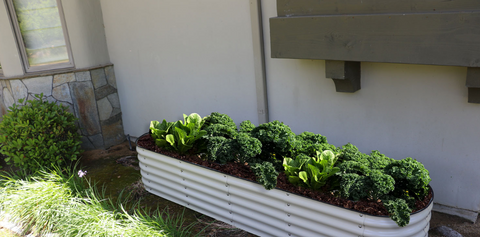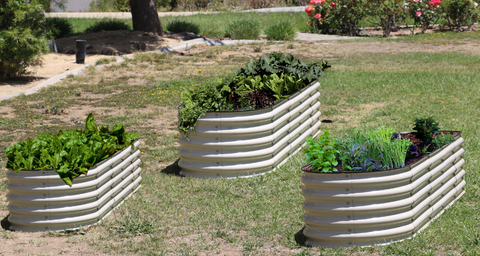Tips from Olle Garden Bed: Zero Waste Habits That Gardeners Can Try
Sustainability is the process of using only what you need now to avoid running out of resources in the future – a concept that fits perfectly into horticulture. But with all the buzz around sustainable living, how do you truly achieve zero waste in your garden? The answer is simple: develop simple zero-waste habits. From planning your garden to planting and harvesting your crops, you can live more sustainably every step of the way. The following content also has some reference value for raised garden beds.

Zero waste planning
The first step in the process involves planning. Cutting everything may feel easier, but having a plan to reduce waste is essential to avoid cutting things wrong. In the garden, this involves planning the fruits and vegetables you might actually use. Do you prefer fresh tomatoes all summer, or are bell peppers more to your liking? Do you prefer sweet corn or would you rather save space for your favorite summer melon? Before ordering seeds, pay attention to what you like to avoid wasting square footage, watering, and fertilizing a season.
Once you've identified your favorite crop, think about how much you want to grow and how many garden beds you have available. By midsummer, it's amazing how many zucchini a plant can produce, and no one wants to see the fruits of their labor go to waste. Before sowing, determine how much of each crop can be enjoyed throughout the growing season and in the fall. Then, plant accordingly. You can give any excess fruits and vegetables to friends and family, and if you don't have enough of anything in one season, you now know to grow more in the next!
In the end, you need to grow the right plants in the right area. Some crops, such as onions, prefer specific lengths of sunshine to thrive: long days further north, intermediate days in the middle of the country, and short days further south. Other crops, such as peppers, require long, hot days during the growing season to bear fruit and can be hampered in areas where the summer is short. Planting fast-growing varieties will help increase yields while avoiding wasting garden bed space on plants that don't fit the area.
While planning isn't the most exciting step, it's the first step to living a more sustainable life.
Sustainable farming
After planning your garden bed to minimize waste, consider sustainable habits you can adopt when growing crops.
Planting a garden with seeds is more environmentally friendly than buying seedlings in plastic pots and liners. Many seed packs are made of paper and can be recycled or composted. If you do need to buy seedlings, try buying those that grow in compostable fiber pots, or make sure the packaging material is recyclable (like Burpee's!). You can also save the plastic pots and reuse them in next year's seed container. To avoid wasting seeds that may not be used, reach out to friends, family, and neighbors to see if they can use them in the same season. The vitality of the seeds is decreasing every year, so it is best to plant them now to avoid waste.
Zero waste farming habits
After planning and planting vegetable and fruit gardens, keep zero-waste living in mind throughout the growing season.
One way to implement zero-waste habits in your garden is to observe your water consumption. Whether it's in the desert of the Southwest or the hot and humid South, managing water is one of the greenest habits you can take. Instead of flood irrigation and sprinklers, try drip irrigation, on-site watering and coordinating a watering schedule around rainfall events to reduce wasted water. Rain barrels are an effective way to collect water from the roof for later use in the garden. Another common way to reduce excess water use is to use greywater, or water previously collected from sinks, bathtubs, or showers for reuse in the garden.
Keeping your garden well fed is essential for peak production, as well as for plant health. To reduce external sources of nutrients such as chemical fertilizers, waste is composted and distributed throughout the garden. It's a simple, zero-waste living practice that cycles nutrients into the soil and enriches its microbial community. The easiest way is to use a garden compost bin. Carry a kitchen compost bin with you so you can move waste from the kitchen to the outdoor bin. If you want to enrich your garden bed on a whole new level, try using a worm compost bin!

Be sustainable throughout the harvest process
During the long season of developing a zero-waste habit, remember that even after you harvest the plant, almost everything can be eaten, composted, or collected and stored for the next season. When plants start dying after harvest, remember to compost as much as possible to avoid generating yard waste from landfills. After harvest is also a good time to start planning for the next season. Map out where you plant your crops and adjust the location for the next year to avoid planting the same crops in the same place every year. By changing the location of each crop, you can minimize the chance of disease and thus avoid the use of pesticides and other chemicals in the future. Finally, for any non-hybrid plant, collect seeds by opening pollination varieties and heirlooms, and label and store them for next year's planting season.
